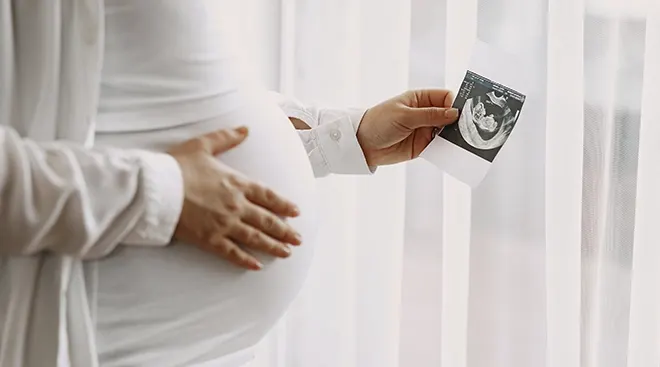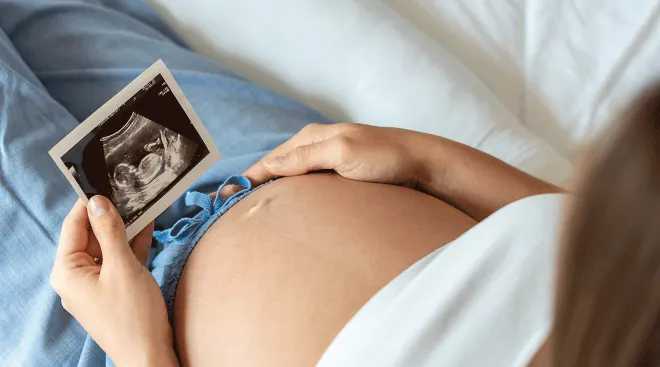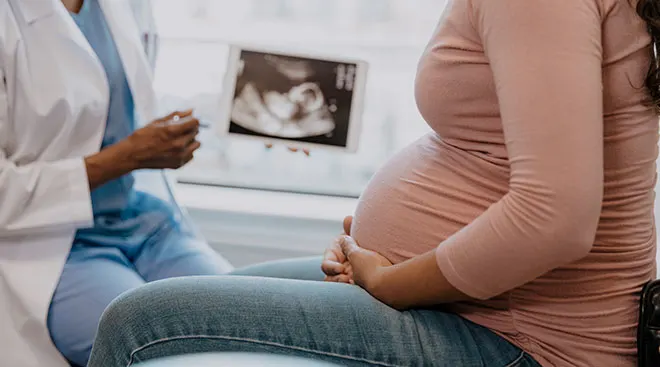What Is a Zygote—and How Is It Different Than an Embryo?
Zygote, morula, blastocyst, embryo, fetus: What’s the difference? It might seem like these are all similar, but breaking pregnancy into stages “allows us to better describe the incredible and complicated process of development,” explains Patience Gallagher, MD, an ob-gyn at Dartmouth Health. Here’s what to know about the zygote—including how it forms, how to distinguish between a zygote vs. embryo and more…
“Zygote” is the term used to define the very earliest stage of pregnancy, when a sperm and egg first unite, according to research published through the National Institutes of Health (NIH).
Zygote definition
A zygote is a single cell that’s the result of one egg and one sperm combining their genetic material, resulting in 23 pairs of chromosomes, says NIH.
When egg meets sperm (called fertilization), 23 chromosomes from the egg match up with 23 chromosomes from the sperm. This results in a zygote, a single cell with 23 pairs of chromosomes. “Once all the correct genetic material is in place, mitotic cell division can start, so that the zygote becomes two cells, then four, then eight,” says Barbara Wilkinson, MD, an ob-gyn at Brigham and Women’s Hospital and instructor at Harvard Medical School.
A zygote is a type of embryo (along with morula and blastocyst) that’s in its earliest stages of development, says Wilkinson. The pregnancy is simply referred to as an embryo once it implants in the uterine lining, which happens around six days after fertilization. “You’ll see these terms all wrapped up into ‘embryonic development,’ basically saying it’s just part of the spectrum of the first weeks after fertilization,” explains Wilkinson.
There are three main stages of fetal development, according to Cleveland Clinic: germinal, embryonic and fetal. Here’s what happens in each stage:
Germinal stage
- Sperm and egg meet. The germinal stage begins at conception when a sperm and egg join in your fallopian tube, and it’s the shortest stage of fetal development. When the sperm fertilizes the egg, it creates a zygote.
- Zygote. The zygote journeys down to your uterus, dividing in the meantime.
- Morula. Once the zygote has divided into 16 cells—about three days after conception—it’s known as a morula. Under a microscope, a morula looks like a ball of cells that are “stuck together, without borders,” explains Wilkinson. In fact, the name comes from the same Latin root as “mulberry,” she adds, due to the morula’s berry-like appearance.
- Blastocyst. Five to six days after conception, this round ball of cells becomes more specialized: It develops a central, fluid-filled area of cells (known as the “inner cell mass”) that’ll become your baby, and an outer layer of cells (the “trophoblast”) that’ll become the placenta and amniotic sac, says Wilkinson.
Embryonic stage
Around six days after conception, the blastocyst implants in the uterine lining—at which point the pregnancy is known as an embryo, says Wilkinson. This is the stage when your baby’s organs begin to develop; it lasts until eight weeks after conception. (You’re technically considered 10 weeks pregnant then, since pregnancy is counted starting on the first day of your last menstrual period—which occurs two weeks before fertilization.) “The general consensus is that a fertilized egg that doesn’t implant isn’t technically a pregnancy,” says Gallagher.
Fetal stage
Starting at nine weeks after conception (when you’re 11 weeks pregnant) through the end of your pregnancy, you’re officially carrying a fetus. “There’s no magic switch that flips,” says Wilkinson. “You could think of the embryonic stage as laying down the foundation of all the organ systems and basic structures, and then those continue to grow in size and develop during the fetal stage.”
A single zygote can become identical (monozygotic) twins if it splits into two separate zygotes with the same sets of DNA, which can happen up to 12 days after conception, says Gallagher. “This can occur spontaneously and is more likely in individuals who pursue assisted reproductive technology,” says Gallagher. Fraternal (dizygotic) twins, on the other hand, happen when two separate eggs are fertilized by two separate sperm, resulting in two individual zygotes with different sets of DNA.
The main risk this early on in pregnancy is miscarriage, or early pregnancy loss, says Wilkinson. Miscarriages are officially estimated to occur in about 15 percent of all known pregnancies, although the rate may be at least one third of pregnancies if you count very early losses, before pregnancy has been confirmed, says Wilkinson.
The true rate is impossible to nail down, because “many miscarriages occur before a person knows they’re pregnant,” says Gallagher. Pregnancy tests look for human chorionic gonadotropin (hCG), a hormone that’s only detectable on home pregnancy tests around the time of a missed period—about two weeks after conception.
It’s also difficult to know exactly why these very early pregnancy losses occur, although the majority are likely due to a genetic fluke. Chromosomal abnormalities are the most common cause of pregnancy loss, accounting for about half of all known miscarriages, says Steven Spandorfer, MD, a reproductive medicine specialist at NewYork-Presbyterian/Weill Cornell Medical Center. “These genetic abnormalities, which are more common in older women, occur randomly during early cell division and hinder the normal development of the embryo,” he says.
Although a zygote is tiny, it has all the ingredients and instructions it needs to become your baby.
Please note: The Bump and the materials and information it contains are not intended to, and do not constitute, medical or other health advice or diagnosis and should not be used as such. You should always consult with a qualified physician or health professional about your specific circumstances.
Plus, more from The Bump:
Patience Gallagher, MD, is an ob-gyn at Dartmouth Health in New Hampshire. She earned her medical degree from the Albert Einstein College of Medicine in New York City.
Steven Spandorfer, MD, is a reproductive medicine specialist at NewYork-Presbyterian/Weill Cornell Medical Center. He earned his medical degree from the Emory University School of Medicine.
Barbara Wilkinson, MD, MA, is an ob-gyn at Brigham and Women's Hospital and an instructor at Harvard Medical School. She earned her medical degree from Case Western Reserve University.
StatPearls, Embryology, Week 1, April 2023
Cleveland Clinic, Conception, September 2022
StatPearls, Embryology, Fertilization, April 2023
Cleveland Clinic, Fetal Development, March 2024
Journal of Clinical Medicine, Odds and Predictors of Monozygotic Twinning in a Multicentre Cohort of 25,794 IVF Cycles, April 2023
Cleveland Clinic, Miscarriage, July 2022
Learn how we ensure the accuracy of our content through our editorial and medical review process.
Navigate forward to interact with the calendar and select a date. Press the question mark key to get the keyboard shortcuts for changing dates.




















































